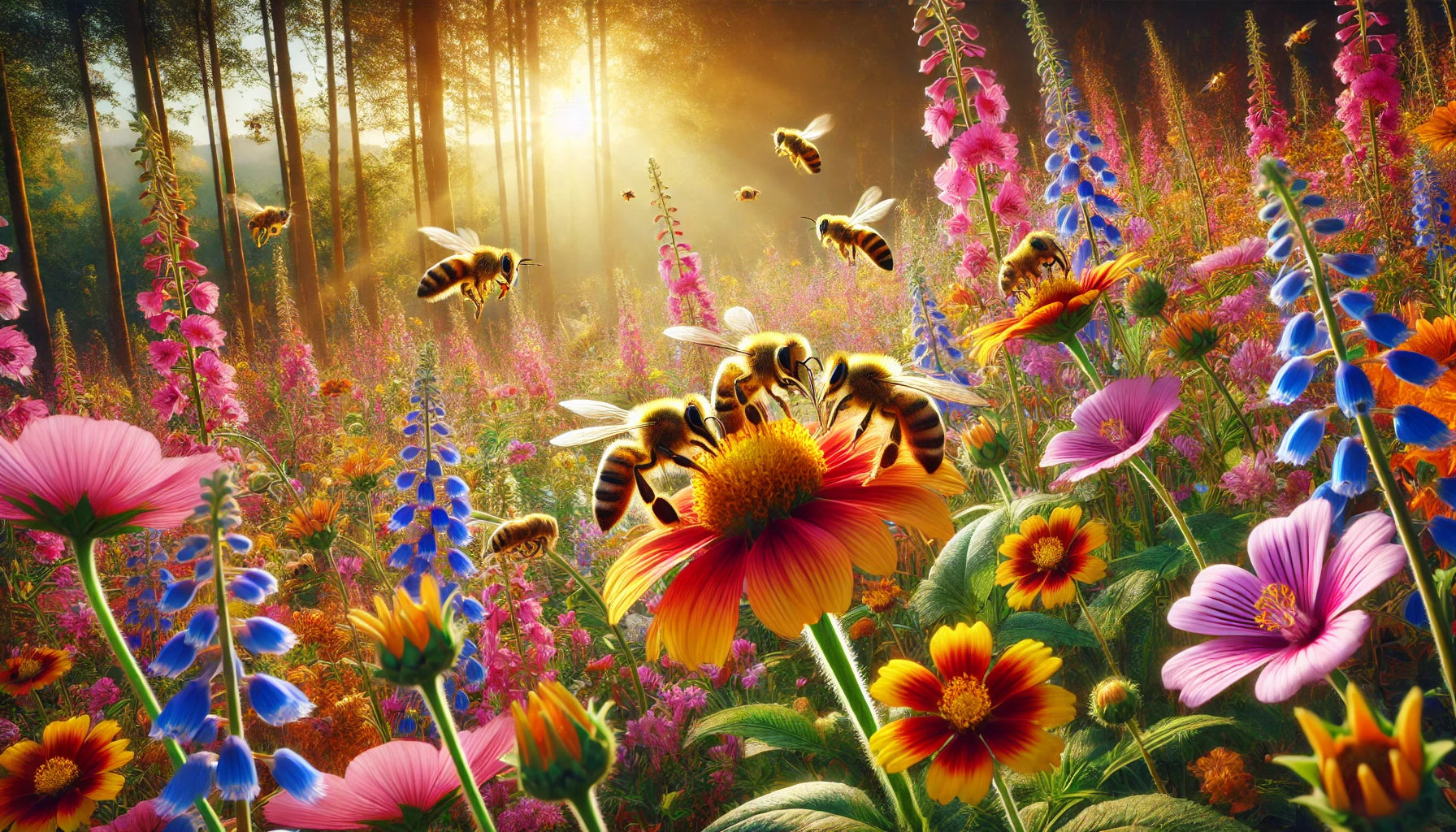Bees are essential to our ecosystems and food supply, yet many people don’t realize that bees can also carry diseases that impact their health and survival. Disease transmission in bees primarily occurs through pollen, which they collect and distribute among flowers and other bees. This process, while vital for pollination, can spread diseases among bee populations, affecting native bees and honeybees alike.
In this guide, we’ll explore the ways diseases are transmitted, the impact on bee health, and how to support a balanced ecosystem that includes healthy native bees.
How Bees Can Carry and Spread Diseases
Bees gather pollen from multiple flowers, making them ideal pollinators. However, during this process, they can also pick up pathogens like bacteria, viruses, and fungi. When these bees visit different flowers, they inadvertently spread these pathogens, which may infect other bees that come into contact with the same flowers. This is particularly concerning for native bees, as they often don’t have the same immunity as managed bee colonies.
Wild bees, such as mason bees and bumblebees, are highly susceptible to diseases transferred from honeybees. In environments where honeybee populations are dense, the risk of disease transmission increases, challenging the health of the entire bee ecosystem.
Impact of Pollen and Diseases on Native Bee Health
The impact of diseases on native bees can be profound. When native bees encounter infected pollen, it can weaken their immune systems, reduce their life span, and hinder their ability to reproduce. This can ultimately affect the life cycle of bees, especially for native species that are already struggling due to habitat loss and pesticide exposure.
Diseases such as Nosema and deformed wing virus have been documented in native bee populations, demonstrating the potential risks when diseases spread across species. Understanding these risks and promoting bee-friendly environments is crucial for preserving healthy, diverse bee populations.
Tips to Protect Native Bee Populations from Disease
- Support Bee Diversity: Plant a variety of flowers to support different bee species.
- Use Bee Trap Attractants Sparingly: If managing pest bees, use bee trap attractants carefully to avoid impacting native bees.
- Limit Pesticide Use: Pesticides can weaken bee immune systems, making them more susceptible to disease.
- Encourage Wild Bee Habitats: Allow areas of your yard to remain undisturbed, providing safe spaces for ground-nesting native bees.
- Promote Clean Hives for Beekeepers: Encourage local beekeepers to maintain clean hives to reduce disease spread among wild populations.
Taking these steps helps reduce the spread of diseases among native bees and supports their role as vital pollinators in the ecosystem.
Why Honeybees and Native Bees Are Vital to Agriculture
Bees, both native and honeybees, are incredibly important to agriculture. Honeybees are widely recognized for their role in pollinating large-scale crops, but native bees also contribute significantly. Unlike honeybees, many native bees are solitary, and their unique behaviors make them highly efficient pollinators for specific plants. For instance, certain native bees perform a process called “buzz pollination,” which some plants require to release their pollen.
The agricultural impact of bees highlights why honeybees are so vital to agriculture and underscores the need to protect all bee species from diseases that threaten their populations. When honeybees and native bees are healthy, they both contribute to the richness of our food supply.
Starting a Bee-Friendly Garden to Boost Bee Health
A bee-friendly garden supports both honeybees and native bees. Planting diverse flowers and shrubs creates a steady food source, while minimizing pesticides helps keep bees healthy. By fostering a space that supports different bee species, you can promote a healthier environment that lowers the risk of disease transmission.
The benefits of such an approach extend beyond your garden and contribute to a stronger local ecosystem. If you're interested in a more structured approach, learning how to start a bee farm can provide the skills to maintain bees responsibly.
Creating bee-friendly habitats helps reduce the disease burden on native bees and ensures that pollinators continue to thrive and support local ecosystems.
Support Bee Health with Swarm Commander
Bee health is critical to maintaining biodiversity and a stable food supply. While bees can carry diseases, there are effective ways to mitigate these risks and support both honeybees and native bees. By creating a pollinator-friendly garden, using Swarm Commander products responsibly, and promoting bee diversity, we can help reduce disease transmission. Healthy bees mean a healthier planet for all of us.
Take charge of promoting bee health with Swarm Commander. Whether you're starting a bee-friendly garden or managing hives, Swarm Commander offers tools to support sustainable, responsible beekeeping practices.
Frequently Asked Questions About Whether Bees Carry Disease
Q1. Do all bees carry diseases?
Not all bees carry diseases, but they can transmit pathogens through pollen collection and flower visits.
Q2. Can native bees and honeybees coexist without spreading diseases?
Yes, with proper management and diverse habitats, the risk of disease spread can be minimized.
Q3. How can I help native bees in my garden?
Plant native flowers, minimize pesticide use, and provide undisturbed areas for nesting.
Q4. What diseases commonly affect bees?
Common bee diseases include Nosema, deformed wing virus, and various fungal infections.
Q5. Is there a risk to humans from diseases carried by bees?
Most diseases that affect bees do not pose a threat to humans.



